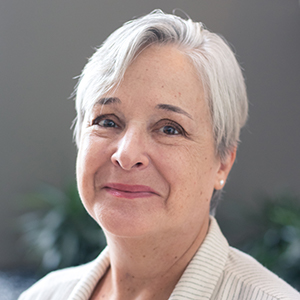Caution: Tchotchkes at work
Origin: Yiddish tshatshke trinket, from obsolete Polish czaczko
First Known Use: 1971
- — Merriam Webster Unabridged
On my office windowsill I have a plastic margarita glass full of paper umbrellas, a small pot of succulents, a pottery jar wearing a scarf and hat, a plastic butterfly ring, a fidget spinner and a sign that reads “Crazy cat lady.”
These are my office tchotchkes. They’re usually more spread out, but I wanted to pose them:

We all have these things, right? The random objects that accumulate in our workspaces and make them our own. Look around your desk/office/lab. What do you see? You can probably tell a story about where each of these non–work-related things came from.
I didn’t even own a cat when I got that “CCL” sign; my boss got excited after I visited the animal shelter and ordered it for me. Now I’m branded.
Why am I writing about this?
Regular readers might recall that we devote our August issue to the topic of careers. We invite you to submit essays and articles related to your career path, sharing what you’ve learned. We want to know what works (and what doesn’t) as ASBMB members seek and find the jobs that fit.
We still want those serious, useful articles and essays (deadline: June 15), but we also want your tchotchkes.
Take a picture of the knickknacks in your workspace (bonus points if you’re in the photo too) and then tell us their story: Where did you get them? How long have you had them? What do you think about/feel when you look at them?
You don’t need to write a lot. Keep it under 100 words. Then send your picture (as a jpg file) and words to ASBMB Today by that June 15 deadline. We’ll share them in our August 2020 issue.
Enjoy reading ASBMB Today?
Become a member to receive the print edition four times a year and the digital edition monthly.
Learn moreFeatured jobs
from the ASBMB career center
Get the latest from ASBMB Today
Enter your email address, and we’ll send you a weekly email with recent articles, interviews and more.
Latest in Opinions
Opinions highlights or most popular articles

Sketching, scribbling and scicomm
Graduate student Ari Paiz describes how her love of science and art blend to make her an effective science communicator.

Embrace your neurodivergence and flourish in college
This guide offers practical advice on setting yourself up for success — learn how to leverage campus resources, work with professors and embrace your strengths.

Survival tools for a neurodivergent brain in academia
Working in academia is hard, and being neurodivergent makes it harder. Here are a few tools that may help, from a Ph.D. student with ADHD.

Hidden strengths of an autistic scientist
Navigating the world of scientific research as an autistic scientist comes with unique challenges —microaggressions, communication hurdles and the constant pressure to conform to social norms, postbaccalaureate student Taylor Stolberg writes.

Black excellence in biotech: Shaping the future of an industry
This Black History Month, we highlight the impact of DEI initiatives, trailblazing scientists and industry leaders working to create a more inclusive and scientific community. Discover how you can be part of the movement.

Attend ASBMB’s career and education fair
Attending the ASBMB career and education fair is a great way to explore new opportunities, make valuable connections and gain insights into potential career paths.

